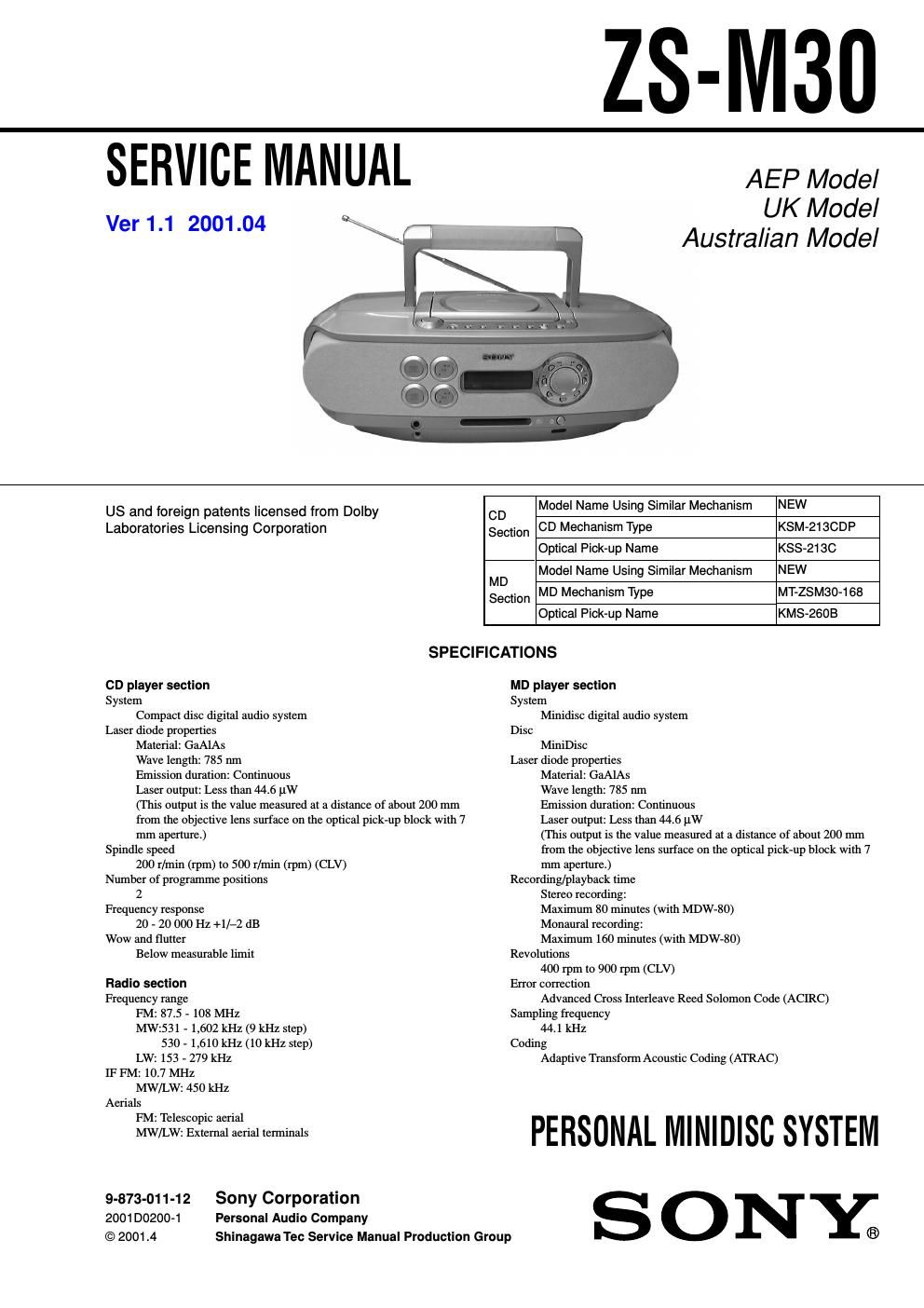Sony zs m 30 ver 1 1
This is the 84 pages manual for sony zs m 30 ver 1 1.
Read or download the pdf for free. If you want to contribute, please upload pdfs to audioservicemanuals.wetransfer.com.
Page: 1 / 84
